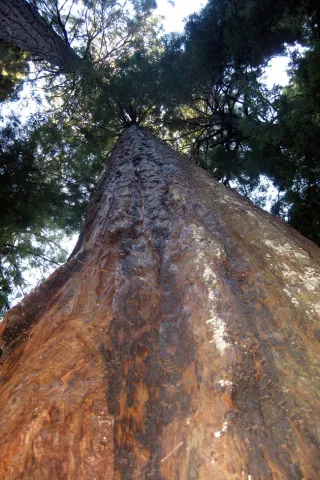
October and November were, fortunately, not fire-months in our region, but we received more rain during the last three months of 2021 than we did in all of the 2020 water year. The City even closed the Oxbow Commons flood gates for a short period when the October atmospheric river hit. Alas, the deluge was followed by a record for the City and County of San Francisco for the most consecutive days of no precipitation during the rainy season. I had to periodically irrigate my patio pots and a few newly planted starts for the last two weeks, and our daytime temperatures are almost 20 degrees above normal. What can we, as avid gardeners, do to respond to what appears to have become a completely unpredictable climate with the largest rainfall variability on earth (according to the US Geological Survey)?
One of the Master Gardeners' mission areas is to “…extend research-based knowledge on sustainable landscape practices, with focus on healthy families and communities and sustainable natural ecosystems.” Our own gardening activities have contributed to keeping mentally sane (at least most of us) during the pandemic, but have we ever considered that our gardening and educational efforts may have benefits far beyond our own fence lines and affect well-being and public health decades into the future? The proverb attributed to ancient Chinese wisdom, stating that the best time to plant a tree was 20 years ago, and the second-best is today, seems to be truer today than it ever was, with climate-change effects impacting all of us. But more importantly, we may want to add to the Chinese proverb that the best way of gardening is to keep future generations in mind and the second best is to cherish and sustain the trees that live under our stewardship today.
When I went on a hike with my dog on a particularly glorious and clear morning at Alston Park recently, I looked out toward Mount George and was struck how well hidden the city landscape is under the extensive tree canopy and thought about the benefits trees provide that go beyond mere beauty and sense of well-being. I began to look at that city tree canopy from a climate change perspective and began to do some research of how much carbon is tied up in the biomass of the urban forest, including both public parks and streets, and also mature backyard trees on private lots.
Usually, more than half of a tree's total weight is below ground, where the roots form a dense network of living carbon that benefits and is part of the complex soil ecosystem essential to soil fertility and health.
As one example of a native tree species we are all familiar with, coastal redwoods remove and store more carbon from the atmosphere per acre than any other forests on the planet, including tropical rain forests, according to recent research. My own backyard grove of five Sequoia sempervirens trees that appears to have originated from root sprouts of a much larger, single tree decades ago is tying up as much as 4,000 pounds of atmospheric carbon dioxide per year in their roots, trunks, and branches. I used the Tree Carbon Calculator of the US Forest Service's Pacific Southwest Research Station (https://www.fs.usda.gov/ccrc/tool/cufr-tree-carbon-calculator-ctcc) to come up with this estimate via a simple spreadsheet model that everyone can use easily.
Our oaks are likely not far behind in storing carbon and compensating for carbon dioxide emissions. If we want to reduce or even just stabilize temperatures in this time of rapid climate change, keeping our urban forests intact and growing is an action we can all contribute to. Many other large tree species that are not native occur in our urban forest but equally provide many benefits to public health, wildlife habitat, water and air quality, as well as property values. I found out that in the City of Napa, the only trees that receive some protection on private property is restricted to native trees on parcels greater than one acre. However, private property-owners may nominate any of their trees to become part of the “Napa Registry of Significant Trees” (https://www.cityofnapa.org/DocumentCenter/View/5659/Significant-Trees-Nomination-Packet-PDF?bidId=) to be designated as such by the City Council, so they can be preserved with all their benefits and recorded on the property's deed. Once recorded, a Significant Tree can only be removed if a permit is obtained that meets criteria outlined in the Napa Municipal Code. Every gardener and land steward may want to consider protecting “significant” trees, often taken for granted, and meet the great challenge of keeping our place livable for future generations.
Napa Master Gardeners are available to answer garden questions by email: mastergardeners@countyofnapa.org. or phone at 707-253-4143. Volunteers will get back to you after they research answers to your questions.
Visit our website: napamg.ucanr.edu to find answers to all of your horticultural questions.
Photo credits: Attribution-NonCommercial-NoDerivs 2.0 Generic (CC BY-NC-ND 2.0) Wally Gobetz
Information links
UC Davis Climate lab https://www.universityofcalifornia.edu/climate-lab
University of California Climate Change https://www.universityofcalifornia.edu/subject/term/climate-change

